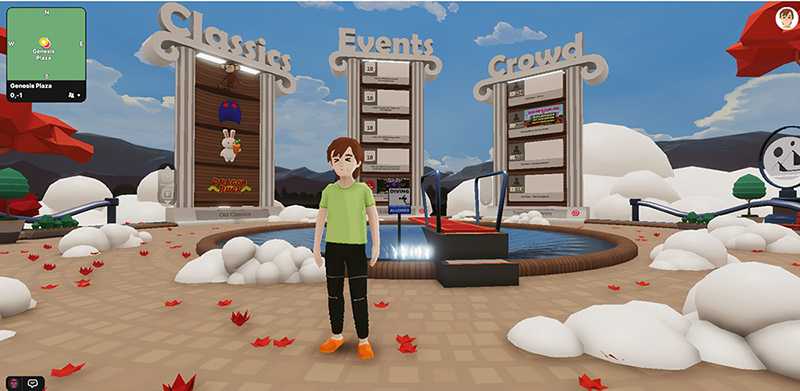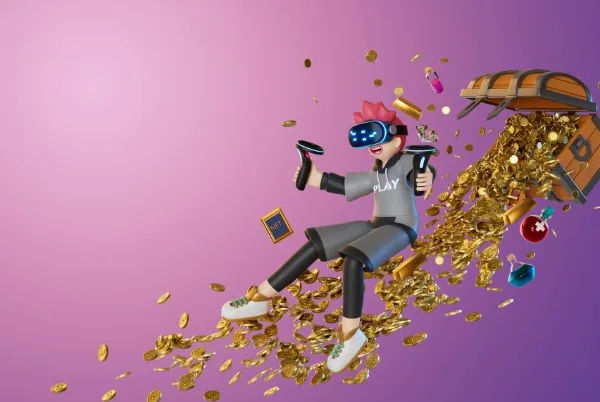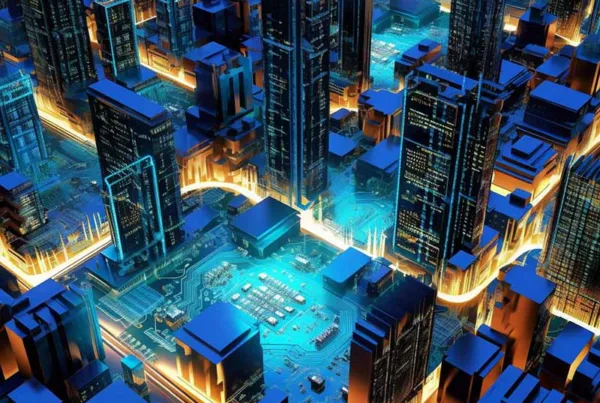We’ve all become accustomed to lifelike graphics in video games and movies in recent years.
Special effects and simulated physics have very closely resembled the real world for some time now. So why are metaverse graphics so bad? There are a few legitimate reasons that we’ll discuss here.
The Metaverse Loads in Real Time
Video games take time to load. This occurs when the game is first loaded, when starting a new level, and (sometimes) when entering a new area. However, the metaverse isn’t preinstalled on your computer, so it has to load in real time.
This means that all of the graphics, scripts, environmental settings, sound effects, players, and more must load as you’re approaching them. First they transfer through your internet connection, then they are processed by your graphics card.
Consider how much we all want faster Internet connections so that we can constantly stream our favorite movies and TV shows in high-definition without interruptions. Those cinema-grade high-definition videos take a massive space, right? Now, apply that concept to constantly streaming an entire three-dimensional environment in real-time.
Since better graphics take more transfer, loading, and processing time, it just isn’t feasible to use enhanced graphics in real-time. And that’s assuming the use of a powerful desktop computer with a decent internet connection.
Once you begin considering smartphones, V/R headsets, and mobile connection speeds, quality has to be scaled back even more.
Now you might be thinking, “MMO games also load in real-time, and they have better graphics than the metaverse.” That’s true, but there’s a reason that you have to download and install an MMO game before playing: the environments, scripts, sounds, and animations are preloaded on your computer. When you go online, it just has to load player information and a few (largely predetermined) in-world events.
Even then, MMO games still aren’t perfect. The movement of other players lags frequently, and transitioning from one area to another sometimes fails due to server connection issues.
Unlike MMO games, metaverse environments can’t be preloaded on your device because they are largely created by the users. This means they are added, removed, and changed regularly. This volatility also makes it difficult to cache items. So, graphics have to be scaled back to help improve real-time performance.
Why Are Metaverse Graphics so Bad in V/R? To Avoid Motion Sickness
Virtual reality is already playing a significant role in the metaverse. However, it includes yet another layer of complexity on top of those listed above.
V/R environments put a unique strain on processors. They must react in real-time to your every subtle move. This includes even the slightest twitch of the head that typically goes unnoticed.
Following your every move takes a significant amount of processing power in itself. Even a small amount of lag can quickly cause motion sickness. So, there’s not really any room to scale back interactivity. The only choice game developers have in reducing processing resources is to scale back graphics.
Even More Processing for Augmented and Mixed Reality
Augmented reality will see heavier use as the metaverse grows. Web 3.0 is all about integrating the visuals and conveniences of technology with the real world. Many devices, including V/R headsets, already do this.
However, it takes even more processing power to map out a real world environment and augment it with computer generated visuals in real-time. This is why, for example, the Oculus Quest 2’s camera feed has poor quality; it’s actually analyzing the dimensions of your environment while also displaying it in real time.
Integration with Blockchain Technologies
Most metaverse platforms also interact with blockchain technologies, including wallets. Decentraland, The Sandbox, and Meta Ruffy are just a few of the many virtual worlds that operate with their own cryptocurrencies. Sometimes, these currencies are used both inside and outside of the virtual world.
Since the transactions and economies of these virtual worlds rely on real-time collaboration with blockchain platforms, they have to scale back in other areas. This, once again, means reducing graphics. Hence another reason why metaverse graphics are so bad. There are just too many other processes that take priority.
What Better Graphics Currently Look Like in the Metaverse

Second Life has better graphics, but they come at a price.
Despite the challenges listed here, we do have one example of what better metaverse graphics look like. Second Life is a virtual world that decided to allow better graphics despite the limitations. So what does it look like?
Lag and load times are accepted norms. Initially, worlds often appear gray and players float around like wisps of fog. It can take several minutes for environments and avatars to fully load.
Granted, Second Life can work well. It just requires a fast Internet connection and a top-of-the-line gaming PC. Personally, I have fast internet and a decent gaming rig. It takes the SL world a few minutes to load properly, and that’s if I’m standing still.
However, a friend of mine with gigabit internet speed and an industry-leading gaming PC can usually load it in several seconds.
Lessons from Second Life
What can we learn from Second Life about bad metaverse graphics? Some creators have found clever ways to improve the loading time of their virtual environments. For example, Second Life supports image sprites (using one image to store several images). They’ve also found ways to write LSL code efficiently and scale back their reliance on code.
Other metaverse platforms and creators should consider similar strategies. Fortunately, they’re probably already doing that. The metaverse is still a relatively new concept, and developers are working hard to learn exactly how it works and how to make it better.
Looking Ahead: Will Metaverse Graphics Continue to be Bad?
Now that we’ve discussed why metaverse graphics are so bad, it’s worth discussing future prospects. Many people are saying that we are a long way away from the technology needed for the metaverse.
They’re wrong. It can exist right now with scaled-back graphics and interactions. However, we’re probably still another 10-15 years away from an equivalent of The Oasis in Ready Player One. But the technologies that provide metaverse infrastructure are improving. The experience with my friend’s computer running Second Life proved that.









Second Life is finally moving towards higher performance. There are new “performance viewers”. Better rendering.
I’ve been working on a high-performance Second Life viewer, a complete rewrite in multi-threaded Rust. Here’s a proof of concept video:
https://video.hardlimit.com/w/sFPkECUxRUSxbKXRkCmjJK
That’s what Second Life should look like in a few years.
You’ll need a good GPU and gigabit networking, and those are becoming more available. A reasonable hardware target is what the average Steam user has.